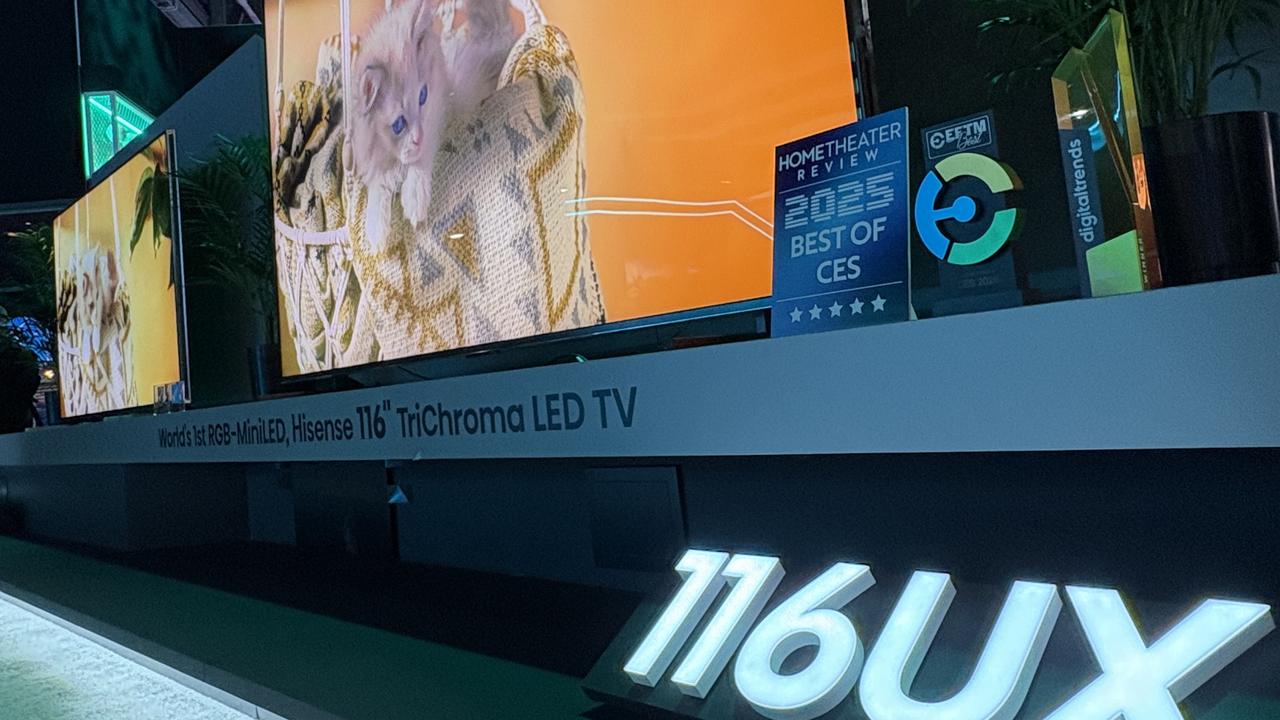Smart TVs 2015: What should you buy?
FORGET all the talk from your local salesman trying to get a bonus. This is what you need to know when looking to buy a new TV.

THIS year is set to be one of the biggest ever for TV.
After all, what’s the point in paying the extra money to watch your 4K Netflix or HD Foxtel if you don’t have a screen to take advantage of it?
LG this morning announced its TV line-up for 2015, which has something in just about every price point, with the range starting at $599 for a 32-inch full-HD unit, all the way up to $39,999 for an 98-inch ultra-HD set.
Other big players include Sony and Samsung, which both have offerings at around the same price points, but are yet to announce specifics and sale dates on their 2015 models.
So what TVs should you be looking at for the money you want to spend?

Less than $1000
This is the pricepoint you’ll be looking at if you are on a budget, aren’t too fussed about the quality of your picture, or if you simply want another TV for the bedroom. Cheaper brands like Kogan offer reasonable sized 4K smart TVs, however colours, contrast and blacks aren’t anywhere near that of other brands. LG has a great option right on $1000 that packs in a full-HD display, the F5500. It lacks smart TV functionality so it doesn’t natively support things like Netflix, but its picture is better than anything in the price range. If it’s a smart TV you’re after, while still wanting a decent picture, Samsung’s 40-inch Series 6 TV is around $800 and will give you both.

Between $1000-3000
This is the spot where a lot of consumers will be looking. Expect to find decent displays and smart functionality. Often this is where you will see some of the previous year’s flagship models. Newer models here will have quantum dot technology which gives brighter colours, is more power efficient and won’t degrade over time like traditional LCD/LED TVs. The best value pick in this range is either Samsung or Sony’s S’UHD (fancy name for quantum dot) options, which are priced close to the $3000 mark for a decent size. The quantum dot technology is simply the best display technology up until you reach OLED, and in that range both Samsung and Sony do it best.

$3000+
If you’re looking to spend over $3000, you’re starting to want the best of the best. Put simply, OLED TVs are the best you can buy. Black levels, colours and contrast are head and shoulders above both quantum dot and traditional LED/LCD technology. At the moment, LG is the only big company to sell OLED TVs, with their full-HD set starting at $3999. The company showed off their 4K OLED sets earlier this year at CES, possibly the best TVs in the world, but unfortunately they won’t be coming to Australia for a few more months due to supply shortages.
Do you need really need a smart TV?
It all depends on how you use your TV. If you simply like watching your free-to-air channels and the odd DVD or blu-ray, then a smart TV is not for you. But if you’re really into watching lots of YouTube videos, streaming services like Netflix and Presto then a smart TV is worth considering. They combine all those services right into the unit so it feels seamless when you swap between say an episode of My Kitchen Rules on channel 7 and House of Cards on Netflix.
Got more tech questions? Email them to us at storiesandtips@news.com.au.



